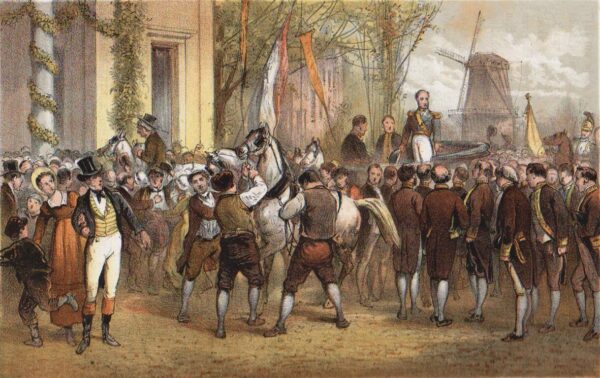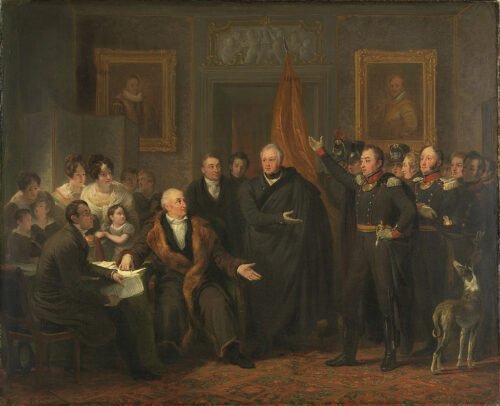Grown Up
By the 17th century, the water level in the city was determined by the high and low tides. However, after the installation of water locks, the lock-keepers could influence the quantity and quality of the water in the canal system. At the same time, an ambitious expansion project was adopted and implemented by the municipality in 1612. At completion 50 years later, the city was four times as large and had the most efficient and finely-meshed waterway system in the world.
Through a spider web of connecting canals, merchandise from all over the world could be delivered to the door of more than a thousand warehouses. A fleet of thousands of barges acted as the ‘fueling pipeline’ of the port. Rowing, or with a draft sail, the freight was carried through the canals by boats much like transferring trucks in modern cities today.
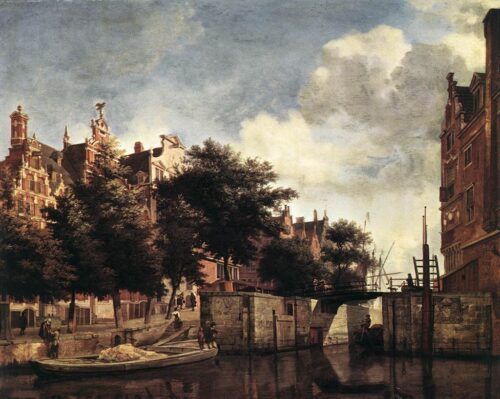
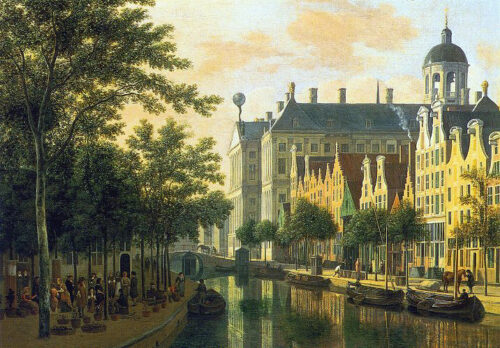
In 1648 the Peace of Westphalia reshaped the European map, ending the Eighty Years’ War or Dutch War of Independence (1568–1648). The future of the United Provinces of the rebelled north would follow the lines of a new sovereign state, one that would follow a completely different course from the Spanish Netherlands of the south. The Dutch Republic would be a confederation of seven provinces, with the county of Holland being the one with the largest cities in the republic (Amsterdam, Rotterdam, Leiden, Alkmaar, Delft, Dordrecht, Haarlem, and the nation’s capital at the time the Hague).
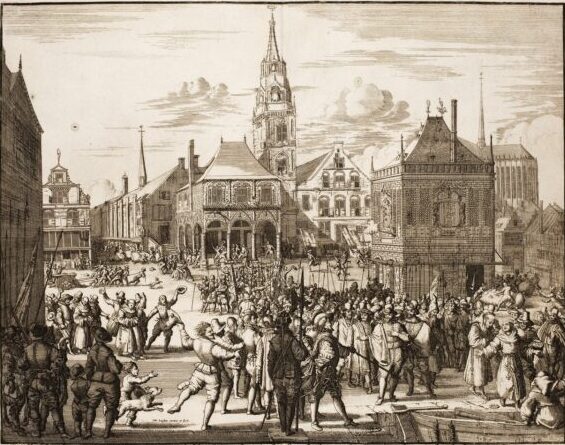
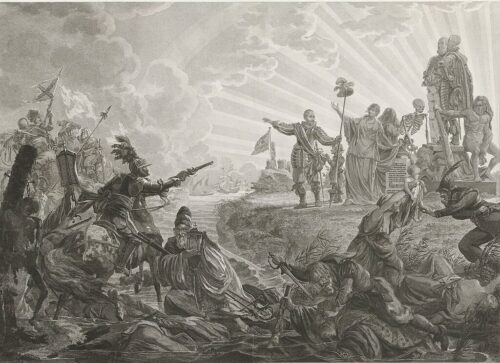
The two Dutch conglomerates (East & West Indies Corporations), had until then established trading posts in several corners of the earth, from Indonesia, Japan & China in the East, to the east coast of North America (areas of modern-day New York, New Jersey, Delaware & Connecticut & others) that were operating as colonies, funneling raw material and money to the motherland. The Dutch Republic, although a small size of the country on land, had become a colossus of the seas & a leading European power.
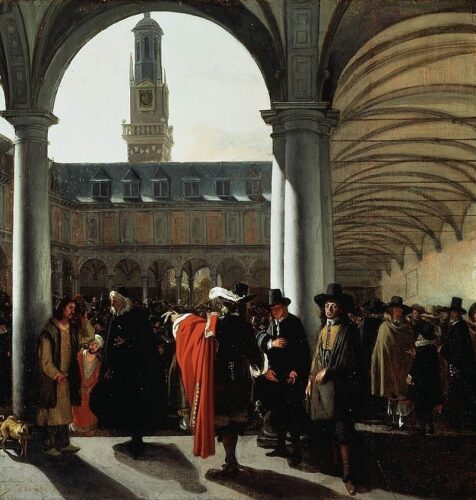

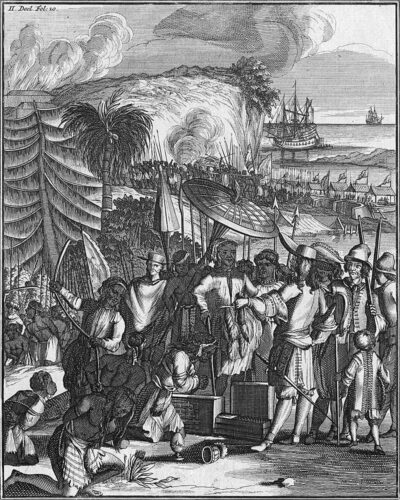
The new Dutch Empire would be the first capitalist superpower in history with many of its characteristics resembling the ones of modern multinational conglomerates. One of these was the new set of economic instruments like public bonds and company stocks. The first company to go to the exchange was the Dutch East India Company (VOC) in 1602 followed by the Dutch West India Company a few years later. Although in the beginning, the stock exchange took place in several cities of the Netherlands it became evident very quickly that the widest spectrum of trading took place in Amsterdam.
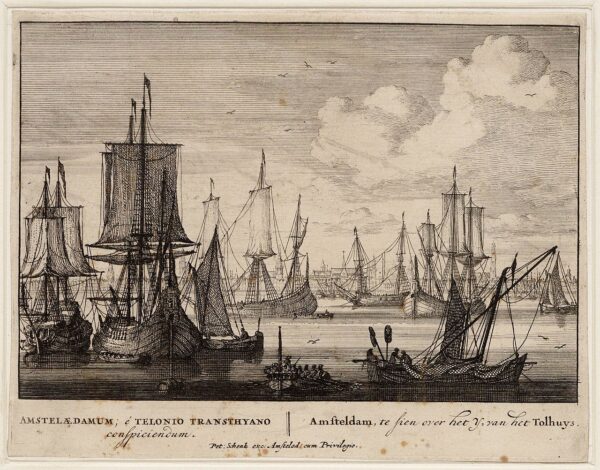
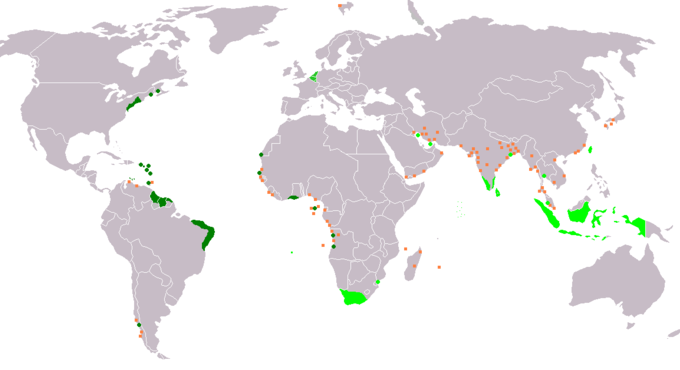
So broad was that spectrum, that the Amsterdam city council saw reason to improve the facilitation of trade in the early 17th century with the creation of Amsterdam got a Wisselbank (Bank of Amsterdam), which aimed the upgrading the whole system of exchange transactions. A new Merchant Exchange, the Beurs van Hendrick de Keyser, was inaugurated, providing a structured and well-regulated hub for traders. It was largely because of these two institutions that in the 17th century the Netherlands – and Amsterdam in particular – developed into the global center of trade and capital provision. (http://www.exchangehistory.nl/story)
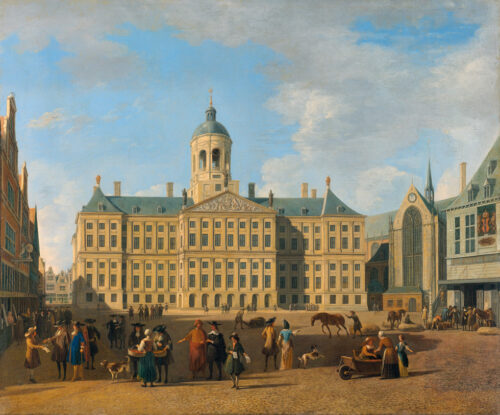
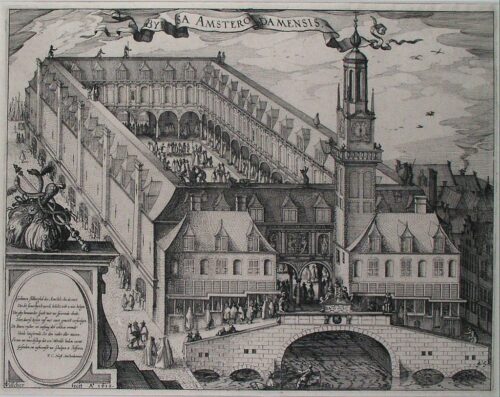
The unprecedented sophistication of the Dutch economy had progressed to such a level that the country would experience a capitalist shock, of the kind modern 21st-century people still strive to grasp. The flower tulip had been imported from the Ottoman Empire in the late 16th century. Its novel and alluring peculiarity coincided with a time of confidence and prosperity for the Dutch who turned their love for the beautiful flower into a commercial craze.
By the mid-1630s the tulip mania had reached such heights that a single bulb of the flower could be sold at a price, ten times the annual income of a skilled craftsman. By then the tulip bulb had become a leading export product of the Netherlands together with gin, herrings, and cheese. There were even several formal and informal futures markets where contracts to buy bulbs at the end of the season were bought and sold. In reality, things had gotten out of hand.
The first recorded speculative bubble in history burst in February 1637, the prices collapsed and many people lost their fortunes. It was not however a shock that could by itself, reverse the upward swing of the Dutch economy. It was not even enough to reverse the love of the Dutch for the flower, which remains a popular symbol of the Netherlands to this day.
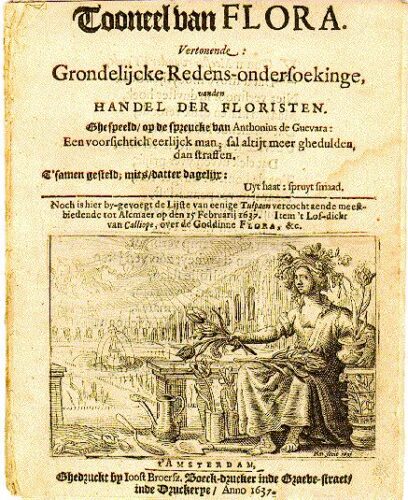
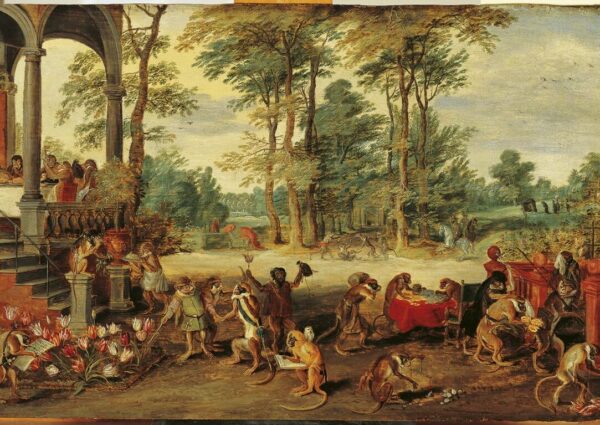
The Dutch golden age was not a glorious period just for the economy, urban development, and overseas conquests. It was also a heyday for the sciences and the arts. A period of true enlightenment for the Dutch and Amsterdamers in particular. Great rationalist philosophers like Spinoza who was born in Amsterdam (1632-1677) to Portuguese Jews parents fleeing the Portuguese inquisition, or René Descartes (1596 – 1650), the father of modern western philosophy, Pierre Bayle 1647 – 1706), one of the forefathers of European Enlightenment, the great English philosopher John Locke (1632 – 1704) considered the Father of Liberalism & then the Dutch masters of painting like Rembrandt & Johannes Vermeer (Girl with a pearl earring), Frans Hals & more, all lived during the Dutch Golden Age which was driven to a great extent by Amsterdam’s phenomenal development.
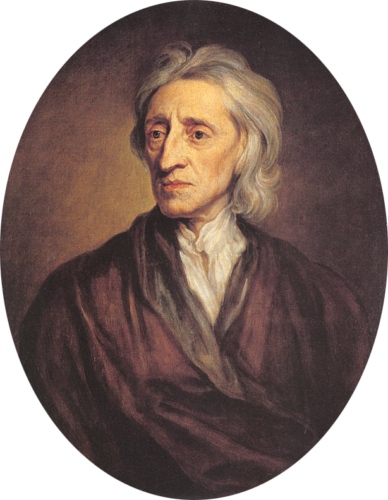
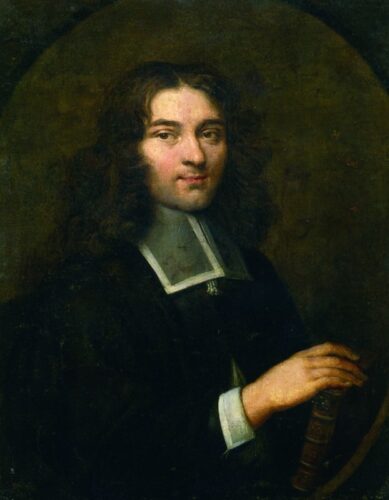

Despite the new wealth pouring into Amsterdam, the city had an inherent lack of space. At the same time, a policy of taxing buildings by the width of their facade gave vent to a fad of tall and narrow new houses that were built along the network of canals traversing the city by the wealthy bourgeoisie. The skinny mansions that served as both houses and workplaces would very quickly become a very distinct architectural signature of Amsterdam.
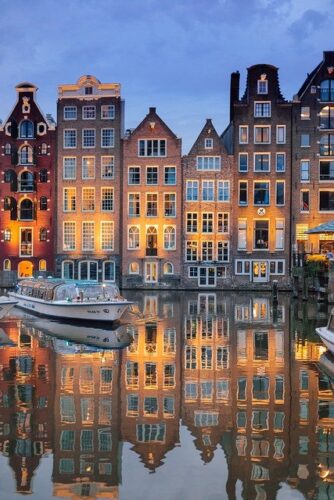
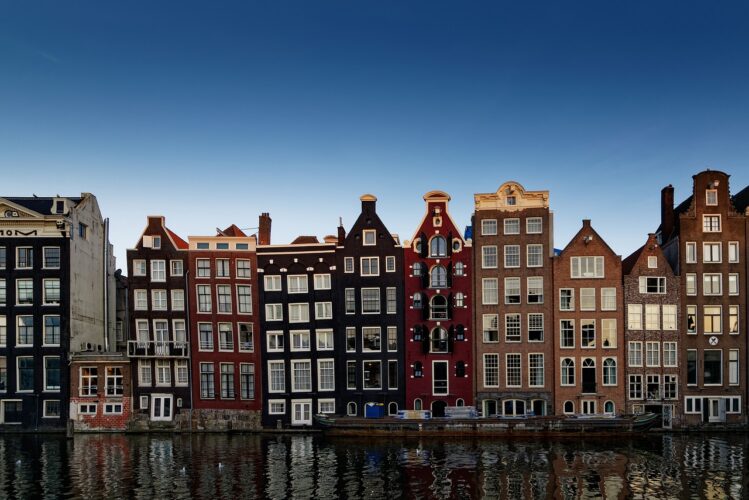
Two massive places of worship were built in the first half of the century, the Zuiderkerk (the South Church) and Westerkerk (the West Church). The gothic city hall was destroyed by fire in 1652, and the present building, the Dam Palace rose on the same site (1655). Dam Square – still De Please in those days – was expanded considerably. The population also grew apace, and by 1700 it boasted some 200,000 inhabitants.
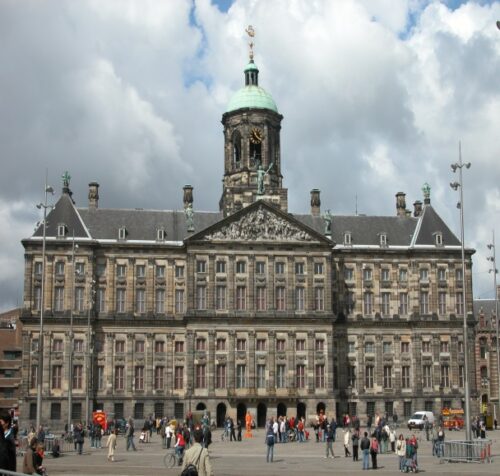
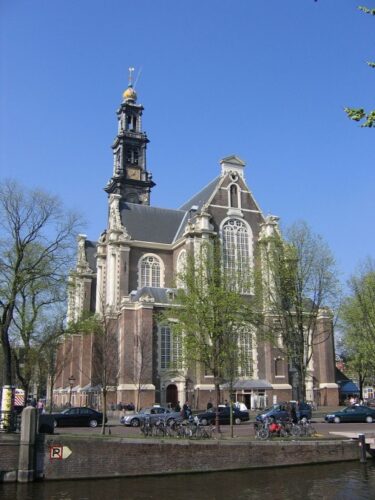
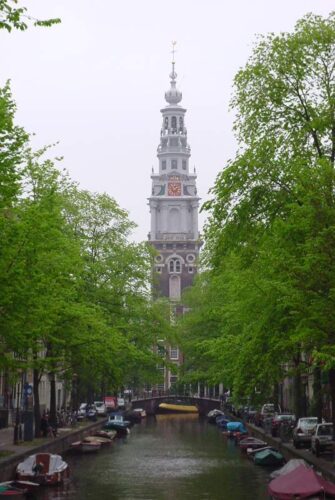
Despite Amsterdam’s wealth & importance to the Dutch Republic the city was not yet the capital of the state. At the time most Dutch cities were governed by a large but closed oligarchy of wealthy & long-established families (the Regenten) who acted as local governments. Amsterdam’s regents were the dominant voice in the affairs of the county of Holland, which in essence meant they pretty much had control of the whole country. Flemish, Scottish, French & German, economic & religious immigrants, or plain seekers of a more tolerant & open-minded society, started forming the majority in the city which integrated them zealously.
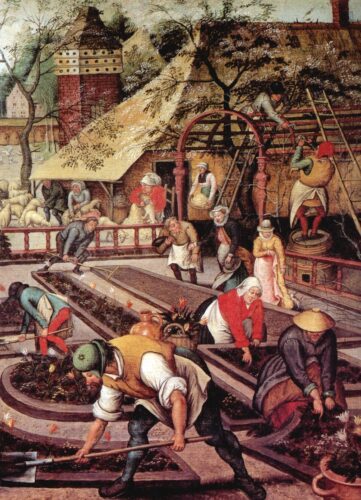

Of course, the golden days could not last forever. The wars with the English, at the beginning against the forces of Oliver Cromwell (1652-1654), after the mercantile policies of the latter, a few years later (1665-1667) with the forces of the recently restored monarch Charles II due to his anti-Dutch policies (the Dutch lose New York in this war), the third one between 1672-1674 & finally the Franco-Dutch War (1672-1678), all weakened the Republic’s powers, consumed its resources & halted its commercial transactions. Especially due to the last war, the year 1672 is often referred to by the Dutch as Het Rampjaar which translates into the year of the disaster.
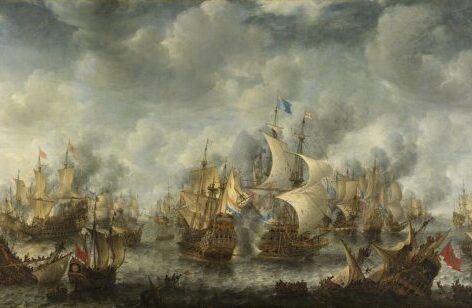
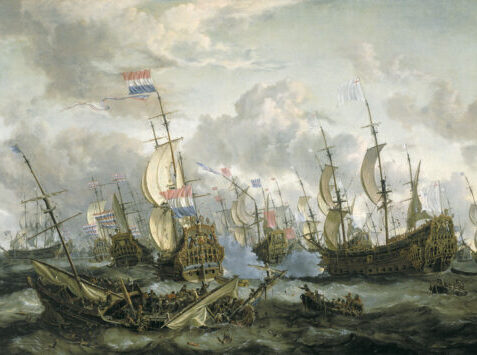
An outbreak of bubonic plague between 1663 to 1666 cost the lives of an estimated 10% of the city’s population. At the same time, the debts of the republic had started to amass especially after the Third Anglo-Dutch War and the loss of important colonies like New York. The rivalry between the Republicans & Royalists or Orangists was the icing on the cake that undermined the unity and therefore the strength of the country. Unemployment became a growing distress and poverty a towering hurdle.
The rift between the ruling class of the wealthy families who controlled the city (the Regents) & the rest of the population started to widen, with the lower classes suffering from atrocities, heavy taxation of necessities & nepotism that made them long for changes. The members of the expanding middle class, on the other hand, adopted new, progressive ideas & began claiming their part in the formation of domestic policies.

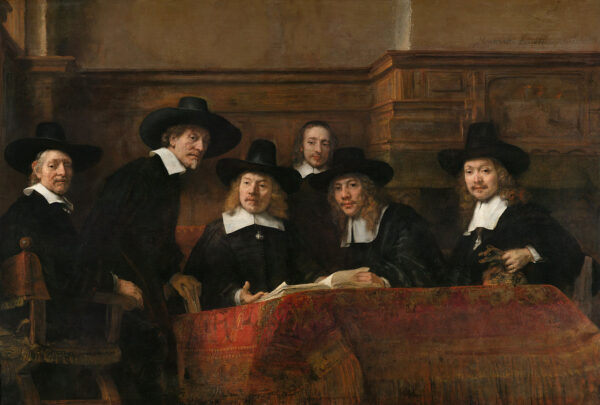
The people’s need for change combined with the continuing Dutch losses in the War of the Spanish Succession (1701-1714) and of course in the constant warfare with the French, led the terrified Dutch public into the restoration of the House of Orange and the appointment of Prince William IV of Orange as stadtholder (head of state) & captain general in all provinces in 1747.


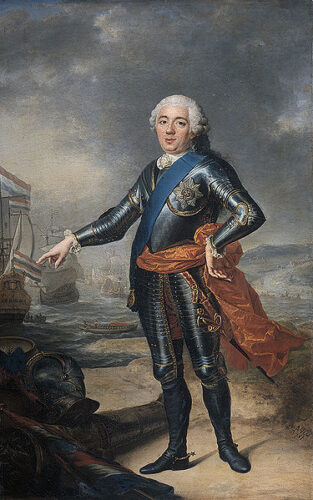
By 1748 the reform movement that had sprung up in Amsterdam demanding an end to the corruption of the Regents, had spread across the Seven Provinces with the violence directed at the hated tax-gatherers. Their houses were systematically plundered and destroyed. In Amsterdam, the epicenter of the insurrection became today’s Rembrandt’s Square. The buildings were vandalized and broken, their stones became ammunition, dozens of houses were looted and three people died. The authorities acted with an iron fist: the leaders were captured and hanged. In the riots that followed the hanging, more than 200 people were killed.

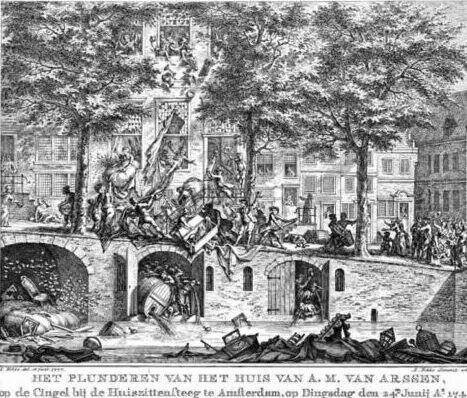
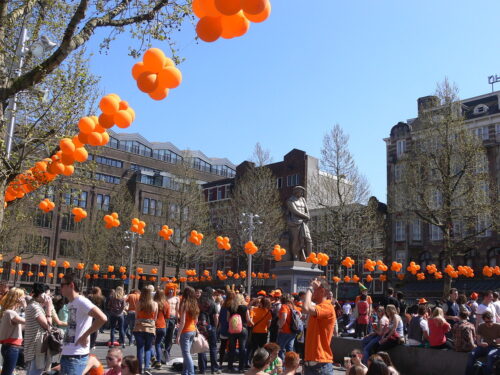
In October 1751, William IV dies unexpectedly at the age of 40, four years after his inauguration, leaving his son, William V, 3 years old at the time, as his heir. The lack of actual & effective leadership in the period that followed, as well as the following incapacity of the heir, William V, to govern in a way that would help his country emerge from the downward spiral, escalated the Dutch demise & transformed the Dutch navy into a shadow of its glorious self.
The Fourth Anglo-Dutch War (1780-1784) proved to be a disaster for the Netherlands. The size of its renowned navy was diminished & the prestige of the country collapsed. The Dutch trade ground to a halt, the country’s ports were blockaded & most of its colonial properties in the West & East Indies were seized by the British.
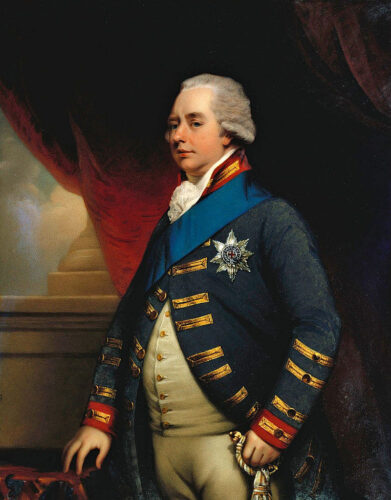
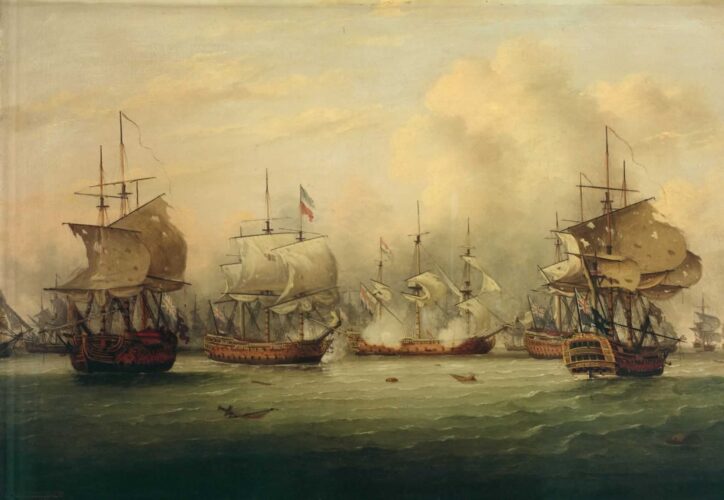
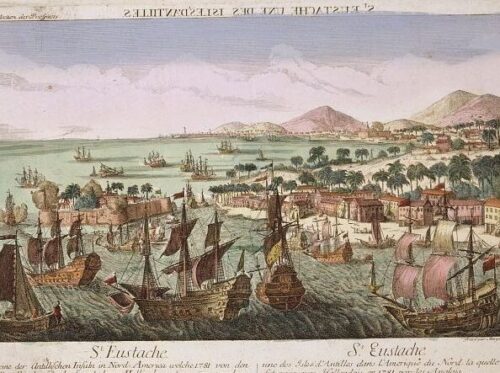
The disastrous results were blamed on the incompetence of the head of state Willem V of Orange by his opponents, who formed the Patriot party & ventured the restriction of his powers. In 1787 Prussian forces (William V’s wife Wilhelmina was the sister of Frederik William II King of Prussia) along with a small contingent of the British army, managed to suppress the rebellion & re-establish William V as a ruler.
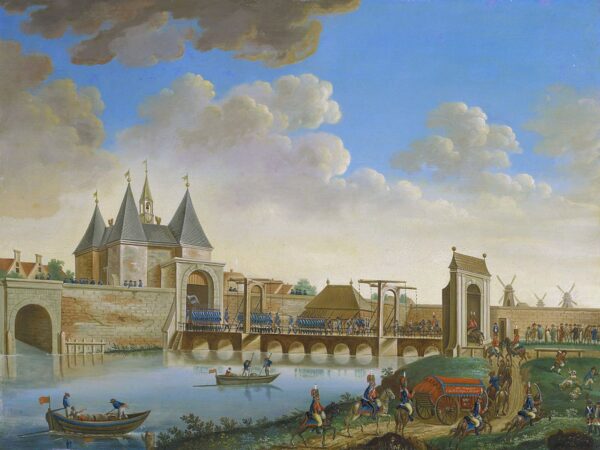
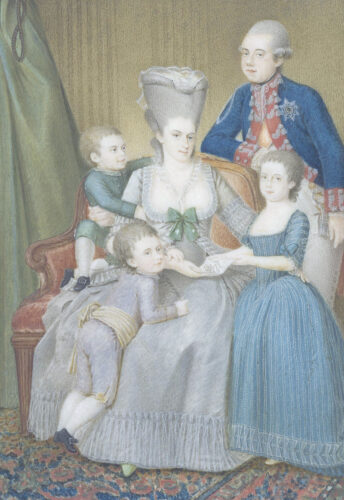
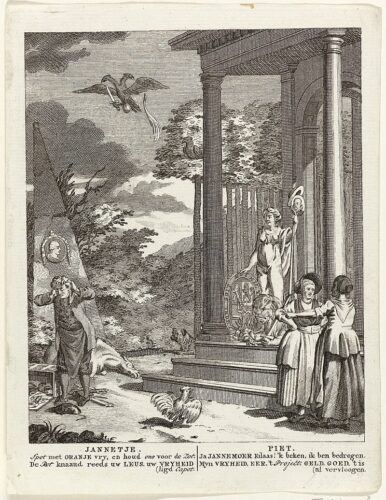
Many of the Patriots fled to the French Brabant (Antwerp) & other parts of France where a successful this time Revolution in 1789, would change the course of history & have an immediate effect on their affairs as well. In 1795 the Patriots returned to the Netherlands & with the help of the French revolutionary army established the Batavian Republic.
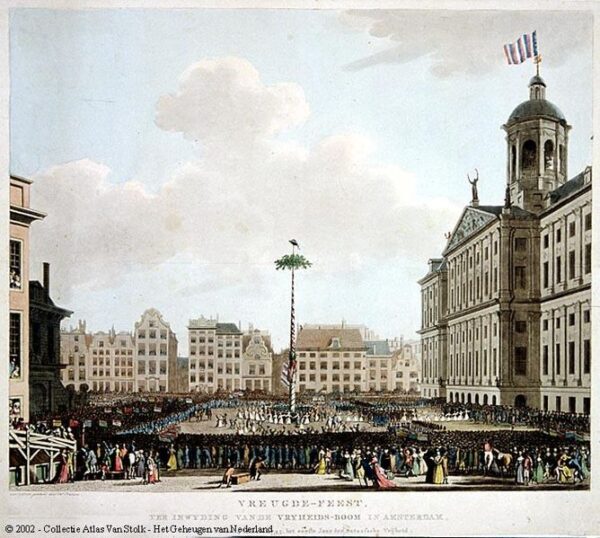
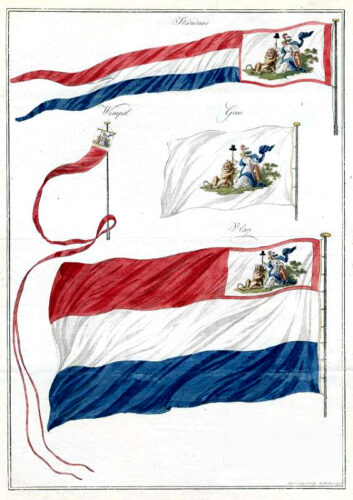
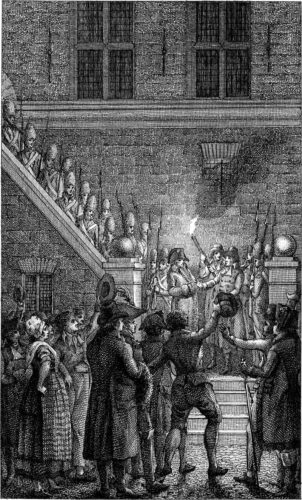
Soon after his self-exile in Great Britain William V handed over the Dutch colonies to the English, by ordering the colonial governors to resign their authority and temporarily transfer the Dutch colonies to the British, to prevent the overseas territories from falling into French hands. The so-called Kew Letters became the official beginning of the end for the Dutch Empire.
French influence soon evolved from plain interference to the establishment of a client state, to dictatorship. In 1801 the Batavian Republic was given a single head of state, only to become a Kingdom, under Napoleon’s brother Louis Bonaparte in 1806. Louis-Napoleon chose Amsterdam as his royal residence and Netherlands was given the name of its most important county. Amsterdam became the capital of the Kingdom of Holland.
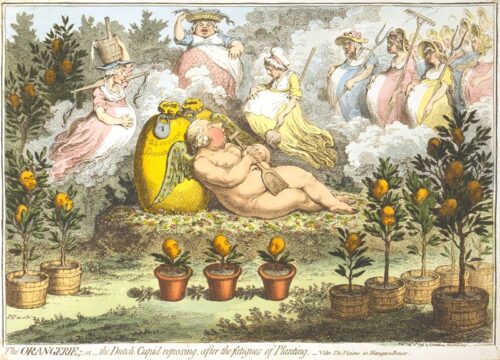

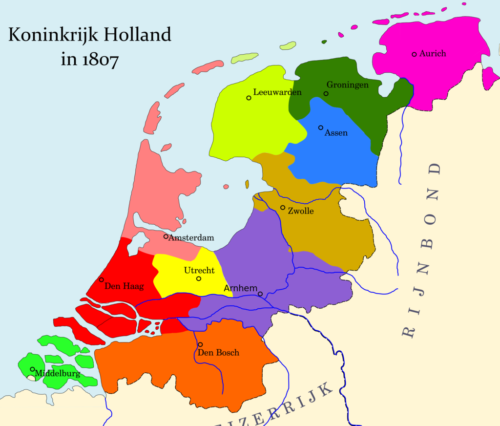
Financially the burden of the French regime would prove to be unbearable for both the country and its capital. First, a huge chunk of the state’s coffers was seized, then the French defaulted on their public debt (much of it was owed to the Dutch), then when the Kingdom of Holland was annexed to the French Empire in 1810 they defaulted on the Dutch public debt as well, completely shuttering a trust for a financial edifice that had taken hundreds of years to build. The last stroke was Napoleon’s economic warfare that closed off the two most important markets, the English and the French to the Dutch. Amsterdam would survive the shock but would forever lose its place as the capital of international banking to the city of London.
In 1813, the allies defeated Napoleon and the French left the Netherlands. A triumvirate of former Orangist regents which had already been formed before the French retreat stepped up and promptly called upon, Willem Frederik, son of William V of Orange who had died in exile in 1806, to be king. The new king would have to rule in a system of constitutional monarchy. On 30 March 1814, Willem Frederik was proclaimed Sovereign Prince of the Netherlands with all due solemnity in Nieuwe Kerk in Amsterdam which continued to serve as the nation’s capital.
A few months later Willem was given the control of Austrian Netherlands and soon after the Duchy of Luxembourg by the winners of the Napoleonic wars who wanted to keep France in check with a strong realm on its northeastern borders. Sovereign Prince Willem Frederik had very quickly become King William I of the United Kingdom of Netherlands, fulfilling a centuries-long dream of the Orange dynasty.
